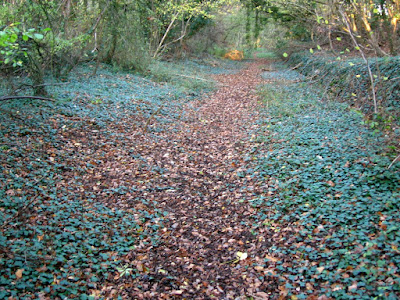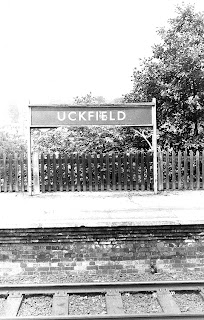Scenario 1.
Scenario 2.
Britain in 2025
Here are two extreme scenarios - the first assumes that none of the recommended actions have been taken, the second assumes that all have been implemented.
Scenario 1
All significant oil and gas reserves are exhausted or have dwindled to an uneconomical level except for those of the Middle East. The USA managed to find some of its needs in the Gulf of Mexico and North Alaska, but these provided only a moderate amount and are now exhausted.
In South America weak governments failed due to the increase in conflict between them and the drug cartels and revolutionary forces. US troops moved in to maintain the running of the oil fields and refineries and were constantly under attack from armed groups so that when the reserves depleted they withdrew, leaving a devastated continent.
In order to revive its post-Communist economy Russia emptied its reserves, but retains its remaining modest oil and gas reserves for its own use, returning to a pre-revolution peasant society.
Following a revolution, and a failed counter-revolution supported by the USA, Islamic fundamentalists now govern Saudi Arabia, bringing Kuwait, Qatar and Bahrain into their hegemony. Only Oman, with British support, remains as a Sultanate. Iraq, after Saddam Hussein, retained a secular government which emptied its oil reserves to fund its economic recovery.
This result of this turmoil was that the only remaining oil reserves of any significance were denied to the West and were in any case needed for water de-salination to support life and irrigation of crops in areas of desert.
The USA seeing its life-style threatened had reacted militarily to these events, but this only succeeded in having its oil supplies from the Middle East cut off. This meant that it exhausted its remaining natural gas reserves for production of liquid fuels and petrochemicals feedstock. By mining its 25% of the world’s coal reserves, the USA supplies its heavy industry with energy, provides for domestic gas by coal gasification and manufactures liquid fuels for transport by coal liquefaction.
Moreover, using the extensive wind farms and with its technological ability it successfully implemented alternative energy programmes which are reserved for essential services like water, sewage and hospitals. The dominant communications industry allowed the creation of a more distributed mode of working and abandonment of massive office complexes.
On the other hand Europe, weakened by failing economies and massive immigration from an increasingly turbulent Third World is in turmoil having failed to implement sufficient alternative technologies and unable to secure adequate oil from the Middle East and gas supplies from Russia.
Britain failed to conserve its oil and gas reserves by exploiting them for short-term profit and tax revenues, using them up by 2010 and, due to the high cost and shortage of imported oil and gas, stagnated. The shortage of liquid fuels led to the collapse of the motor and aircraft manufacturing industries. Capital which could have been employed to create an alternative energy sector was wasted on expanding airport terminals and runways which now lie idle. The 20
th Century trend towards urbanisation has reversed and food supplies are derived from labour-intensive smallholdings as in medieval times. Unfortunately much productive agricultural land was taken for housing, more being needed than before because oil-based fertilisers are unavailable to give a high yield. Horses previously used for recreation were turned to practical use and are employed in agriculture and for the transport of goods. As in the 1930’s high unemployment led to the return of an allotment society with home-grown food aiding survival.
However, communications developed, so that it is quite normal to see a horse and cart with the carter discussing customer requirements with a mobile telephone.
Scenario 2
By adopting many of the proposals of this manual, Britain managed to reduce its energy requirements to around 25% of the 2000 level at which alternative energy sources and a restored coal industry manage to cope. The biggest contributor to savings was the revolution in communications and home-working and restrictions on travel.
Heavy energy users such as motor manufacturers are few and road transport provides only for the needs of essential services such as health care and food production. In that manufacturing survives to provide essential supplies, it is limited to that employing energy-lean methods, as energy dominates company costs.
Domestic air travel is largely replaced by railways and tramways, being totally electrified and run efficiently from wind- and tidal-power generated electricity. Under-utilised motorways provided suitable routes for additional railway tracks and tramways. Air travel is restricted to essential and intra-governmental business as alternative sources of jet fuel failed to be produced in sufficient quantities.
The motive power needs of agriculture is met from crops supporting the manufacture of bio-diesel and food is distributed as rail freight on re-opened branch lines. Because manufacture of plastics was curtailed by a lack of oil-based chemicals, only partly substituted by coal-derived alternatives, more food is produced locally as processed food cannot be packaged so readily. This has eased the re-cycling and disposal problem originating in the 20
th Century and land-fill sites are mostly closed.
Lifestyles have improved with better health from fewer accidents on empty roads, participation in healthy sports and local activities. Drug-taking was finally brought under control not by policing but by the reduction in international traffic which curtailed supply opportunities. Measures taken to make the provision of the health services dependent on the individual’s self care have made smoking and other life-threatening activities a rare phenomenon.
The development of a vast communication infrastructure meant that intellectual and cultural life has been enriched but not in mass attendance events. For example, football supporters view matches staged on pitches equipped as inter-active audio-visual centres with seating reserved for sport officials, press and TV, radio and internet commentators.
Postal services have been replaced by electronic mail and due to the lack of fuel for vans, the mail order business reverted to the old system of a rail-served parcels service. Domestic goods are largely made by local craft industries from sustainable materials.
Unemployment is not the problem it might have foreseen to be, as the lack of energy to drive machinery, means that many functions have reverted to manual labour. For instance, trench-digging and excavation are performed by pick and shovel instead of by mini-excavator, which cannot be fuelled. Some lorry drivers have converted to train and tram drivers.
Scenario 2 is similar in many ways to Scenario 1, but the difference is that the train and tram infrastructure is completed and sustainable alternative energy sources make their appropriate and limited contribution. The public was prepared for the demise of road and air transport by enlightened government. Instead of a bewildering and drastic breakdown of the economic life at the beginning of the century, the changes were anticipated and the transition to a different lifestyle was calm and considered.
































